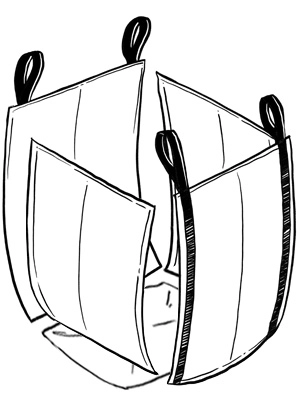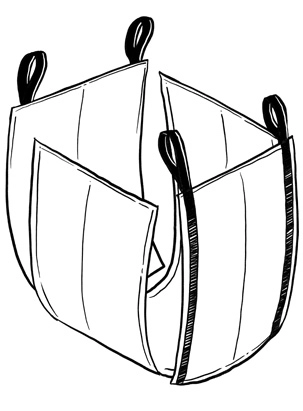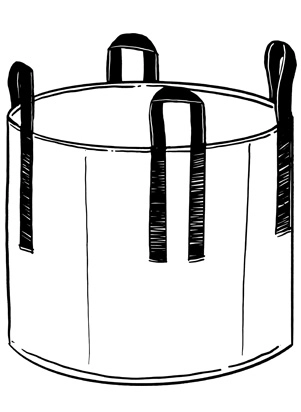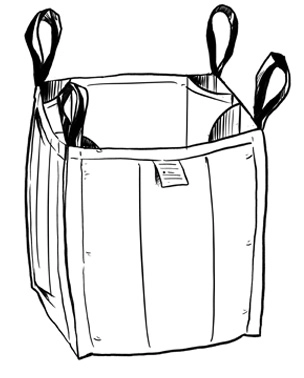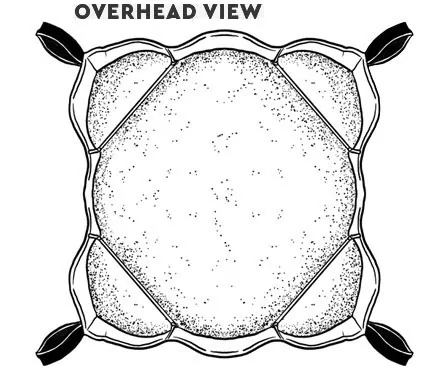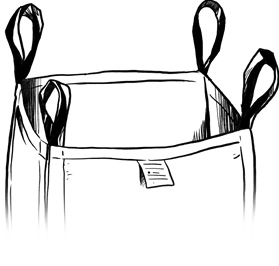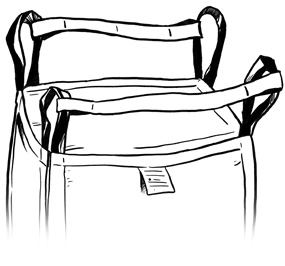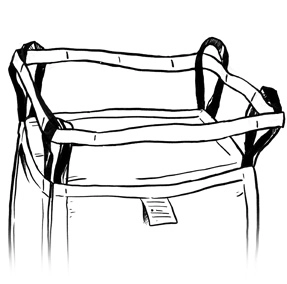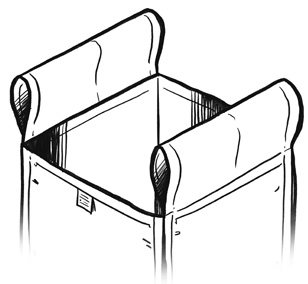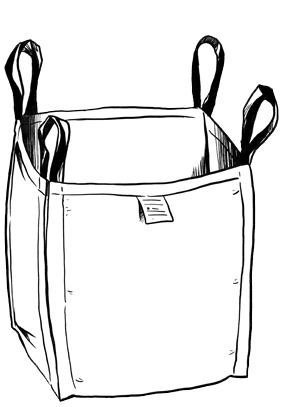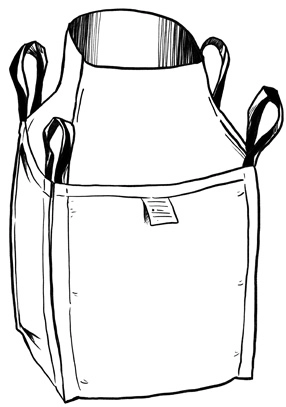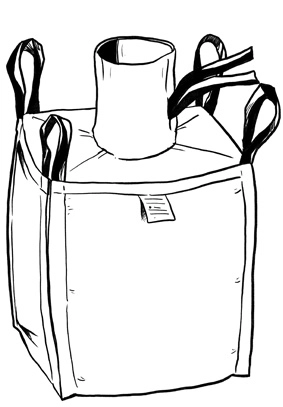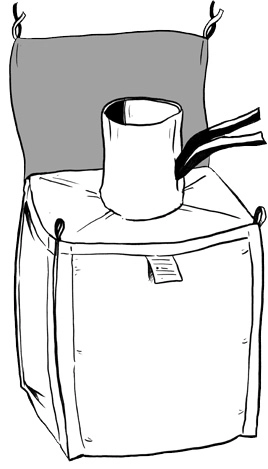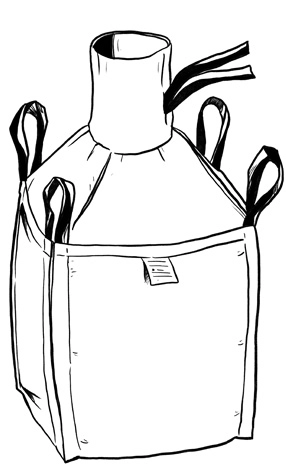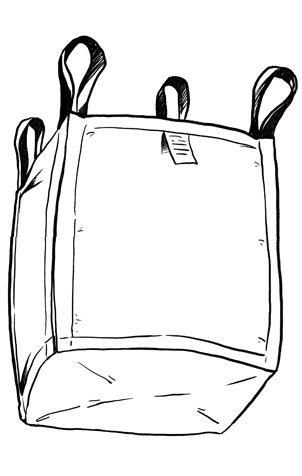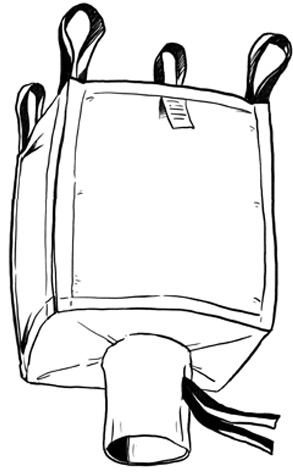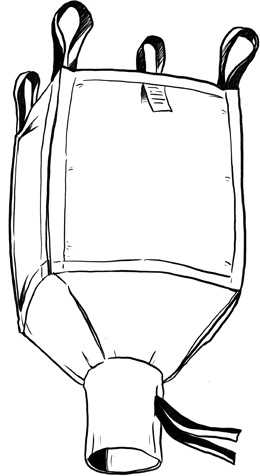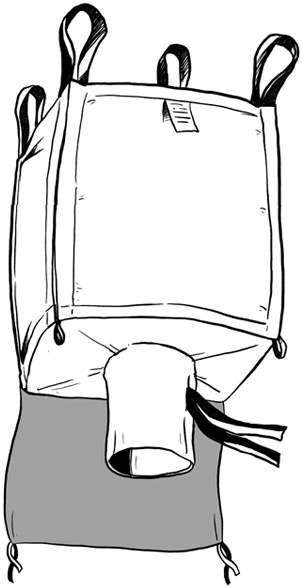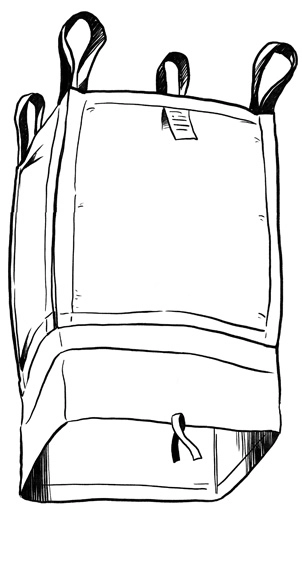Types of FIBC Bags, FIBC Bags Specification & FIBC Bags Uses
Learning about the different types of FIBC bags, along with key FIBC bags specifications and common FIBC bags uses, can help ensure you choose the right bulk packaging solution. Whether you need strength, food safety, or UV resistance, FIBCs are adaptable to nearly any industrial, agricultural, or commercial handling need.
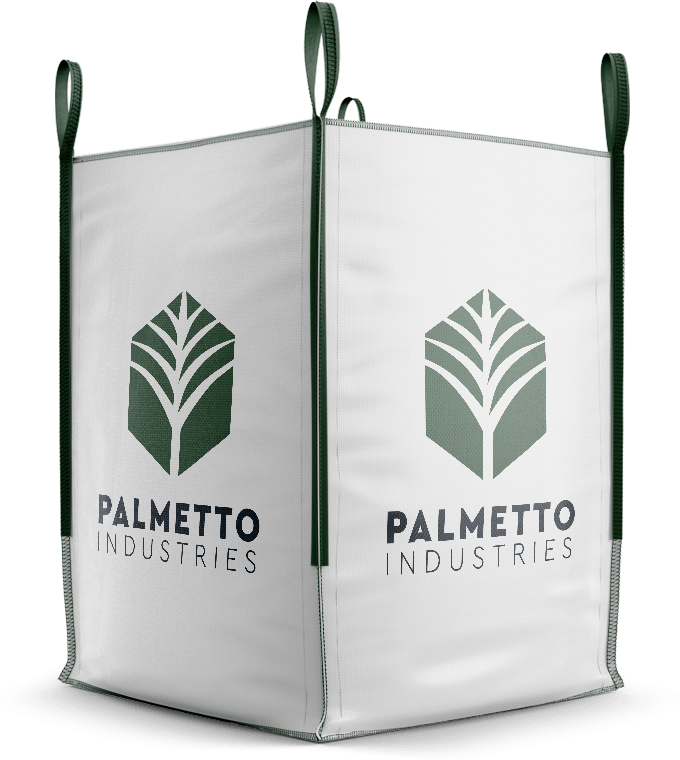
What is FIBC full form?
What does FIBC stand for? The full FIBC meaning is Flexible Intermediate Bulk Container. These large, durable bags are made from woven polypropylene and used to store and transport bulk materials. FIBCs are cost-effective for industries requiring strength, flexibility, and easy handling for dry goods like powders, pellets, and grains.
FIBCs are designed to support heavy loads while maintaining stability during shipping or storage. Depending on the environment and material sensitivity, FIBCs can offer static protection, UV resistance, or moisture barriers. Selecting the right type—like Type A FIBCs or Type B bags—ensures safety and performance in your specific application.
What is a bulk bag?
A bulk bag is a large, industrial-grade container made from woven polypropylene, used to store and transport dry bulk materials. Also known as FIBCs, bulk bags are made to carry 500 to 2,000 kilograms and are common in agriculture, construction, chemicals, and mining due to their durability and reusability.
How many FIBC types are there?
There are four main types of FIBC bags. A, B, C, and D. When FIBCs are filled and discharged, it is possible for the movement of the contents to have a buildup of static electricity. Stopping this electrical charge from increasing is essential if you are dealing with flammable and combustible materials. Other materials may not have issues with flammability.
Types of FIBC bags
FIBC bags, also known as bulk bags, come in several types designed to safely handle different materials and environments. Choosing the right type ensures compliance, safety, and performance, especially when electrostatic risk is a concern.
Below, we explain the four main types of FIBCs and when (or when not) to use them.
Type A
Type A bulk bags provide no static protection. Made of woven polypropylene (woven pp), static electricity is generated as materials rub against the inside surface of the bag as they are filled and emptied. Since there is no static protection provided by Type A bags, they mustn't be used to store or transport combustible materials, or used in flammable or combustible environments.
Type A FIBC bags uses
- Non-hazardous materials.
- Locations with non-hazardous conditions.
Do NOT use for:
- When transporting flammable or hazardous materials.
- When flammable materials or gases are present in your location.
- When a flammable atmosphere with minimum ignition energy less than 1,000mJ is present.
Type A bulk bags are often used in agriculture and construction. For added functionality, these may be designed as 4-loop FIBC bags, or we can provide these bulk bags with discharge spout options, depending on your filling and unloading requirements.
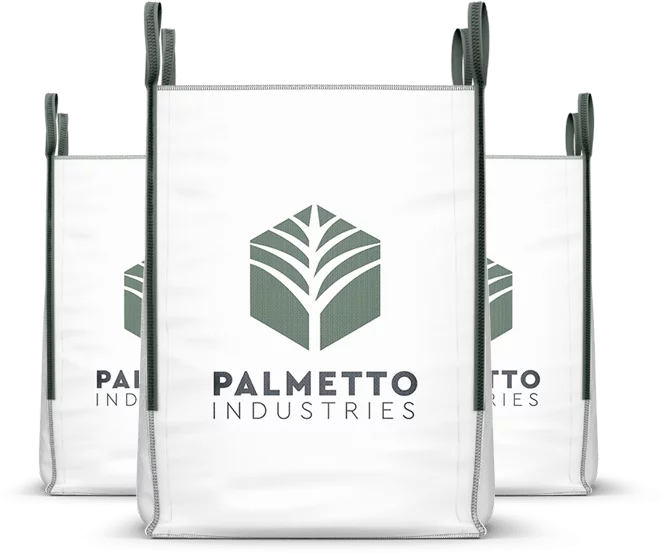

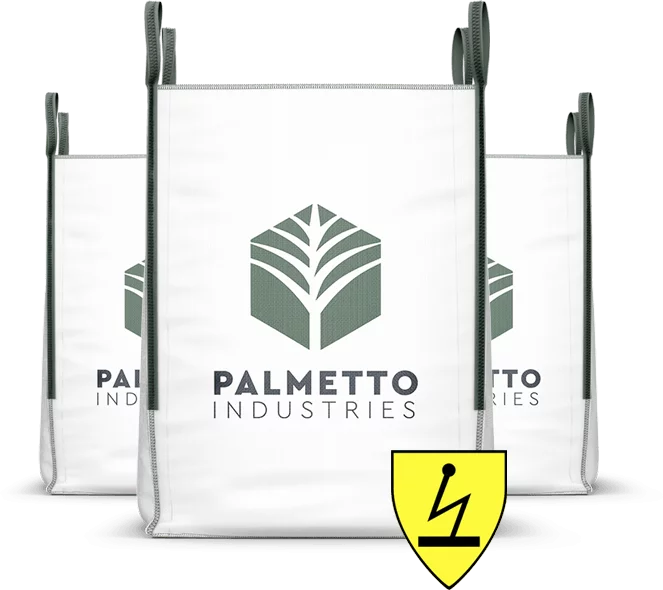
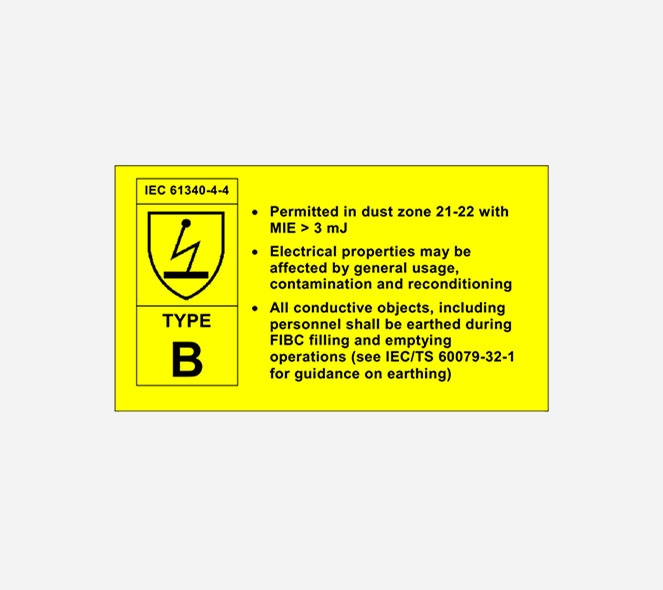
Type B
Like Type A bulk bags, type B FIBC bags do not have any mechanism for dissipating static electricity. The difference is that Type B bulk bags are made from materials that have a low breakdown voltage to prevent the occurrence of highly energetic, and dangerous propagating brush discharges (PBD).
Although Type B FIBCs can prevent PBD, they cannot be considered antistatic FIBC because they do not dissipate electrostatic charge. Normal brush discharges can still occur, which can ignite flammable solvent vapors.
Type B FIBC bags uses
- Transporting dry, flammable powders.
- Where no flammable solvents or gases are present.
- Environments with dust with ignition energies less than 3mJ.
Do NOT use for:
- When transporting flammable or hazardous materials.
These type B FIBC bags are a step up from Type A in terms of electrostatic protection, but for environments requiring higher protection, a type C bag or anti-static bag may be more suitable.
Type C
Type C bulk bags are also known as conductive or groundable FIBC. Originally, they were made from entirely conductive materials. Groundable Type C FIBCs are more commonly made from non-conductive polypropylene interwoven with conducting yarns, normally in a grid pattern. The interconnection of conductive yarns and the connection to ground or earth are critical to the safe use of Type C FIBC. As with any manual operation, ensuring the interconnection and grounding of Type C FIBC is subject to human error.
Type C FIBC bags uses
- Transporting flammable powders.
- When flammable vapors, gases, or combustible dusts are present.
Do NOT use for:
- When ground connection is not present or has become damaged.
- Resistance from any location FIBC to ground-able point.
- When a flammable atmosphere with minimum ignition energy less than 1,000mJ is present.
Type C bags must always be properly grounded during use. They are ideal in industries like chemicals, mining, and pharmaceuticals that need dependable electrostatic protection while maintaining the polypropylene material properties that make these bags durable and versatile.
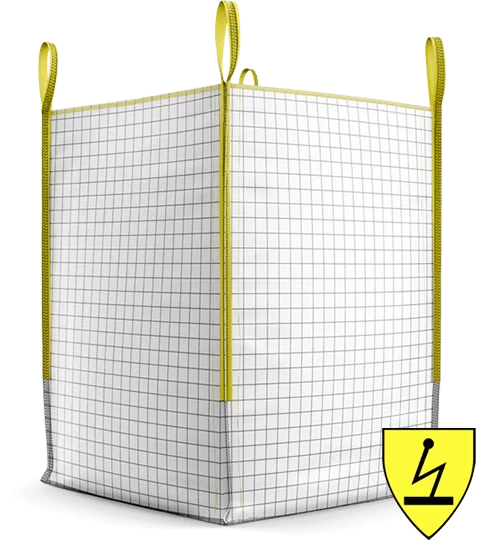
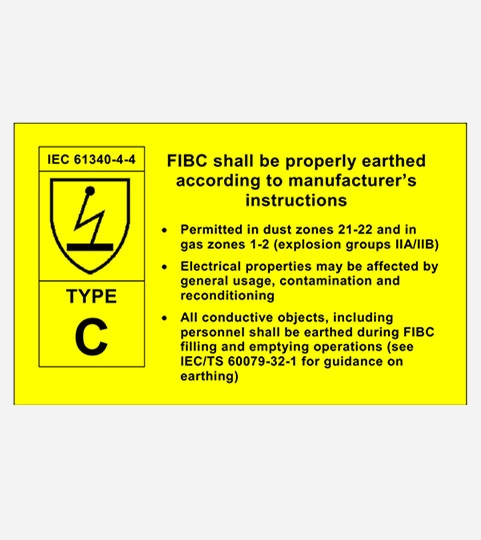
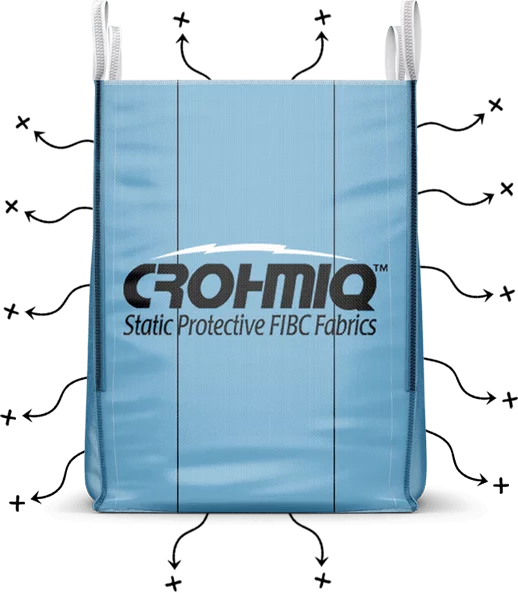
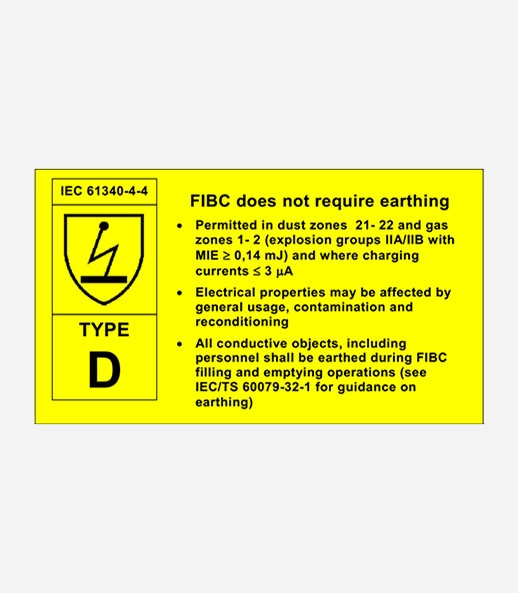
Type D
Anti-static FIBC bags are made from static protective fabric designed to safely prevent the occurrence of incendiary sparks, brush discharges and propagating brush discharges, without the need for a connection from the bulk bag to ground or earth. Using CROHMIQ fabric to construct anti-static bulk bags eliminates the inherent risk of grounding failure that is always present whenever conductive Type C FIBCs (grounded FIBCs) are used.
Type D FIBC bags uses
- Transporting flammable powders.
- When flammable vapors, gases, or combustible dusts are present.
Do NOT use for:
-
When surface of FIBC is contaminated or coated with conductive material such as grease or other flammable and/or combustible materials.
These anti-static FIBC options are ideal where grounding isn't practical. For enhanced containment, liners or FIBC bags can be added, depending on regulatory needs or moisture control. This type is often used in operations requiring static protection but not involving grounding logistics.
FIBC bags specification options
When selecting the right bulk bag, knowing available FIBC bulk bag specifications helps ensure the product meets your handling, storage, and safety needs.
From fabric weight and loop styles to liners, spouts, and static protection, each specification can be customized to match your material, environment, and performance requirements.
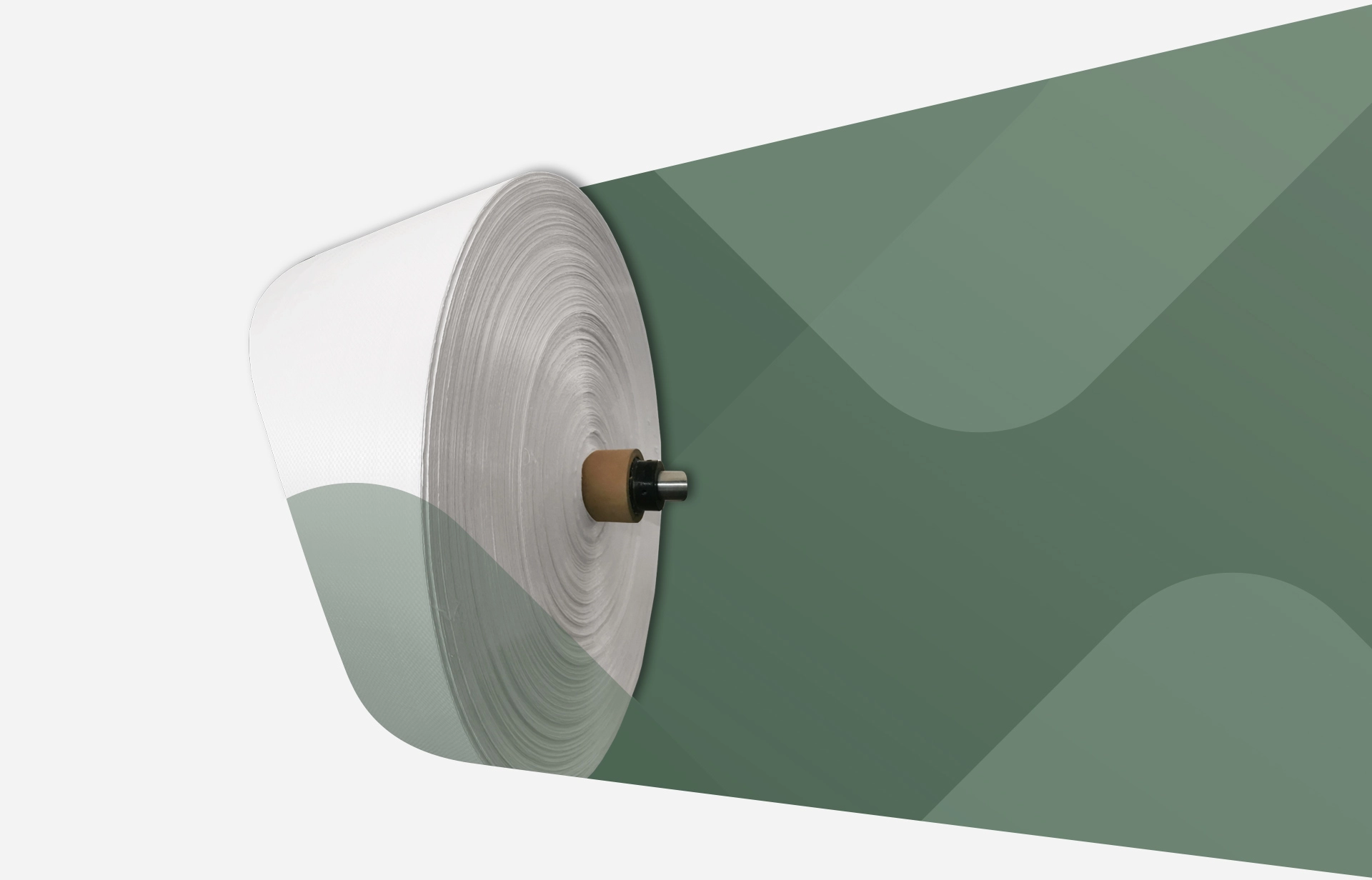
Coated & Uncoated FIBC bags uses
FIBC bags are used across a wide range of industries and applications. One key factor when choosing the right bag is whether you need a coated or uncoated version. The choice depends largely on the product being stored or transported and its sensitivity to moisture, airflow, and contamination.
COATED:
Coated FIBCs are produced with a laminated layer of polypropylene film that helps provide moisture resistance, dust control, and added weave stability. The coating acts as a barrier, helping to protect fine materials from outside elements during storage and transport.
APPLICATIONS:
Coated bags are ideal for transporting and storing dry, free-flowing products in granule, powder, or crystal form, such as:
- Flour, detergents, or salt
- Fine minerals like sand and sugar
- Various chemicals, glass, steel, and milled corn
UNCOATED:
Uncoated FIBCs are made without the laminated layer found in coated bags. Their woven construction allows air to pass through, making them suitable for products that need ventilation. These designs are often selected for specialized airflow requirements such as with vented bulk bags, which are used for breathable applications.
Uncoated bags also reflect the natural polypropylene material properties—including flexibility, breathability, and lightweight durability—making them a dependable solution for a variety of dry goods.
APPLICATIONS:
Uncoated bags are typically used for:
- Products that require breathability
- Food items such as potatoes, onions, peanuts, tree nuts, and coffee beans
- Minerals like rocks, gravel, and sand
Styles of flexible intermediate bulk container bags
FIBCs come in a variety of styles to meet different storage, handling, and space-saving needs. From classic open-top designs to more structured options like the FIBC baffle bag, each style is tailored for specific flow characteristics, product types, and stacking efficiency.
One piece of fabric forms 3 sides, two opposite sides and bottom. Two additional sides are sewn into the larger piece to form the bag.
One piece of fabric forms all 4 sides of the bag with a single piece sewn on to the bottom and top.
Baffle bags have additional pieces of fabric sewn across each corner to allow the bag to retain its square shape when filled.
Baffle bags can hold up to 30% more volume per bag when utilizing the same footprint, allowing for enhanced stability when stacking and enhanced space optimization when storing and transporting.
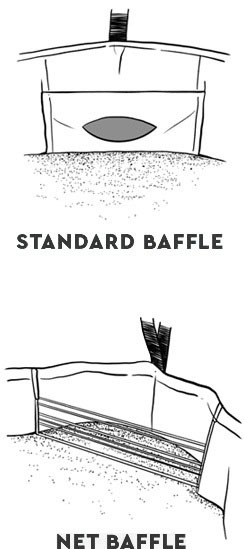
Loop construction
Loop construction plays a key role in how FIBC bags are lifted, filled, and transported. The number, placement, and style of loops—such as corner loops or cross-corner loops—can affect handling efficiency and compatibility with different equipment, especially in high-volume loading or unloading environments.
Each loop is sewn into the seams in the corners of the bag.
Each loop is sewn into one side of the FIBC.
Two straps put through each set of lift loops to allow easy moving by forklift.
A single strap is put through all four loops to allow lifting from multiple sides.
Made of the same woven polypropylene as the bag, they are made for use with forklifts.
Top design
The top design of an FIBC bag determines how it’s filled and whether the contents remain protected during storage and transport. Options range from open tops to spout or duffle tops, each tailored to suit different filling methods, product types, and contamination control requirements.
Standard bulk bag construction with an open top, just as the name implies.
Lightweight top panel to provide better filling options and also a closure.
Cylindrical spout sewn on the top panel of the bag. Works best for more specific applications.
Cylindrical spout top with additional flap for added coverage over the sealed spout.
Cylindrical spout top with a high filling cone for specific applications.
Bottom design
The bottom design of an FIBC bag affects how materials are discharged. Whether using a flat bottom, spout, or full-drop option, each style is intended to streamline unloading, reduce waste, and accommodate the specific flow characteristics of your product. Proper selection ensures efficient and controlled emptying.
Standard bottom construction with no means of discharge.
Standard discharge spout for easy removal of bags contents.
Standard discharge spout for easy removal of bags contents.
Standard discharge spout for easy removal of bags contents with an additional flap for extra coverage.
Lightweight bottom panel that provides quick and easy discharge of bags contents.
Other FIBC products
In addition to standard FIBC bags, we offer a range of specialty products designed to meet specific regulatory, containment, and transportation needs. These solutions help improve safety, cleanliness, and efficiency for a wide variety of industries and materials.
UN Certified Bulk Bags:
UN FIBC bags are designed to meet United Nations safety standards for transporting hazardous materials. They’re tested for strength, stacking, and impact resistance, making them ideal for chemicals, pharmaceuticals, and any materials classified as dangerous goods under UN regulations.
FIBC Liners:
FIBC liners provide an additional barrier inside the bag to protect sensitive or moisture-prone products. Commonly used for powders, food-grade materials, and fine chemicals, liners help maintain purity, prevent leaks, and extend the functionality of your FIBC bags.
Container Liners:
Container liners transform standard shipping containers into bulk transport systems. They’re ideal for high-volume shipments of dry goods like grains, powders, and resins, offering a cost-effective, clean, and efficient way to protect cargo and reduce contamination risks.
Wondering how to choose the right bulk bag for your needs?
From single-loop FIBC bags to specialty baffle or UN-certified designs, selecting the right style, construction, and features can make all the difference in performance and safety. Our team is here to help you manage the options and match the right solution to your material and environment.
Learn more about the FIBC bags manufacturing process to understand what goes into producing a high-quality bulk bag—and why Palmetto Industries is a trusted global supplier.
Contact us online or call us today at (888)252-53-31 for expert guidance and tailored recommendations for your operation.
Not sure which of the bulk bag discharge types is right for you? Contact us now.
If you’ve got questions or want to talk bulk bags, we want to listen! There are many bulk bags and bulk bag discharge types to choose from. Give us a call or fill out the form and we’ll be in touch!
- Our Location
6050 Horizon West Parkway
Grovetown, GA 30813 - Phone Number
+1 706-737-7999 - Email
info@palmetto-industries.com
Get a quote today!
Fill out the contact form below and one of our product
experts get back with you as soon as possible!

